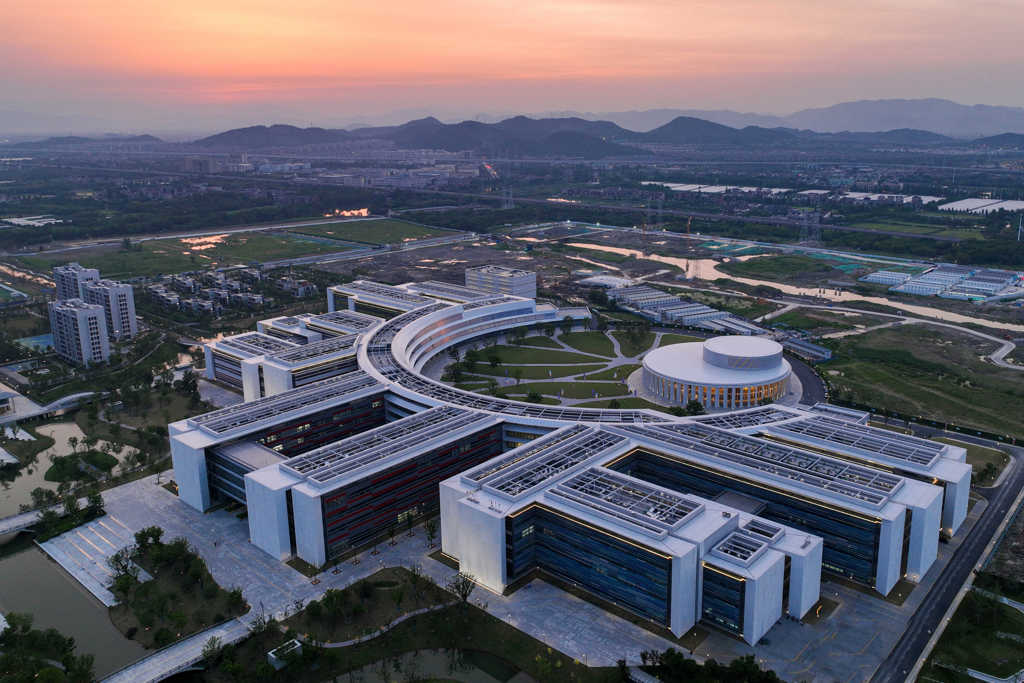Min Qiu on Westlake University, international partnerships and optics shaping the future
Min Qiu on Westlake University, international partnerships and optics shaping the future
Leah Poffenberger, Corporate Communications Manager, Optica

Caption: Min Qiu, Vice President for Research and Chair Professor of Photonics at Westlake University.
Credit: Westlake University
Hangzhou, China, perched on the banks of the Qiantang River, has grown exponentially over the past two decades. The city, which weaves historical landmarks, natural beauty and modern developments together, is home to Westlake University, China’s first private research university. Founded in 2018, Westlake has developed into a burgeoning center for research with over 900 Ph.D. students.
Optica and Westlake announced a new partnership on World Ocean’s Day in June. Westlake joins the Global Environmental Measurement and Monitoring (GEMM) Initiative with a focus on water quality in Hangzhou Bay, just down the Qiantang River from the city of Hangzhou. With this agreement, GEMM begins an expansion to include Asia in the global network.
Min Qiu, Optica Fellow and Director-at-Large, is one of Westlake’s founding faculty members. He joined as Vice President for Research and Chair Professor of Photonics in 2018 and is working in this role to build the international research profile of the growing university. Discover Optica sat down with Qiu to get his perspective on the growth of Westlake, the importance of international partnerships and the role of optics in shaping the future.
Editor's note: The following interview has been edited for length and clarity.
Discover Optica: Westlake is a unique institution as the first private research university in China. Can you tell me about its founding and growth since?
Min Qiu: In 2015, a group of several people, including our founding President Yigong Shi, decided it was time for China to start a new type of research university, which is different from the public universities that already exist. On 15 February 2018, we got the approval letter from the Ministry of Education, approving our funding. We grew quickly, building a new campus and research facilities, but the university will continue to be a small-scale university by Chinese standards. We currently have around 200 faculty members, and we hope to have a maximum of 400.
We are hoping to be a university that shapes the future of research in China. We are doing research in areas from engineering to medical science. After four years, we already had 900 Ph.D. students, which was quite amazing!
 Caption: The Westlake campus in Hangzhou, China. Credit: Westlake University
Caption: The Westlake campus in Hangzhou, China. Credit: Westlake University
We think of ourselves as a state-of-the-art facility of education and research, but we also think of ourselves as an international institute. A majority of our faculty were educated or worked in other countries before coming back to China. For example, our president previously worked at Princeton and obtained his Ph.D. from Johns Hopkins University. I myself a professor in Sweden for 12 years at the Royal Institute of Technology. It’s unique for an institution in China to have so many international ties.
DO: Why is it important to have international connections? How does being part of Optica help you make connections?
MQ: For scientists, it’s important that we have places we can freely talk and collaborate. As an Optica Board member, I would love to become a bridge to connect more of my Chinese colleagues working in optics with other people in the field around the world. Personally, I have been able to meet other members affiliated with Optica and see the forefront of research and industry in the field of optics and photonics.
Optics has the potential to have an impact in developing countries and to monitor climate change and water quality. This was the reason I was interested in Westlake joining the GEMM Initiative: there are huge opportunities with optics.
DO: You mentioned research in life science and engineering ongoing at Westlake, and Ling Li is Chair of the Environmental Hydrology department at the center of the GEMM partnership. What are some other areas of optics research going on at Westlake that excite you?
MQ: At Westlake, we have a lot of exciting research because we recruit young scientists with ambitious research projects for our programs For example, one young professor is doing research on 3D nanoprinting for both electronic and photonic devices. Even though he is still at an early stage, his technology has already been used by one of the biggest LED display companies in China.
We also have colleagues working on transparent photovoltaic films that can be used on glass—it looks transparent, but it can still produce electricity. Another colleague is building flexible photonic devices like lasers and sensors.
We have people working in many other areas of optical research, despite being a small university. Our group working on photonics is small, but every one of them is a very talented scientist that could shape the future.
DO: What excites you about the future of optics—and Optica?
MQ: One of the reasons I started working in optics and photonics over 20 years ago and never left is because I believe the 21st century is the century of photonics. Almost every high-tech device we have is connected to optics and photonics or is built on contributions from optical scientists. For example, we have mobile phones with LED touchscreens—this is all optics.
Optica, and the people in the Society, can definitely contribute to many areas like storage, communication, sensing, and quantum photonic computing. Photonics will change the shape of the future, so this is an exciting time for Optica.
